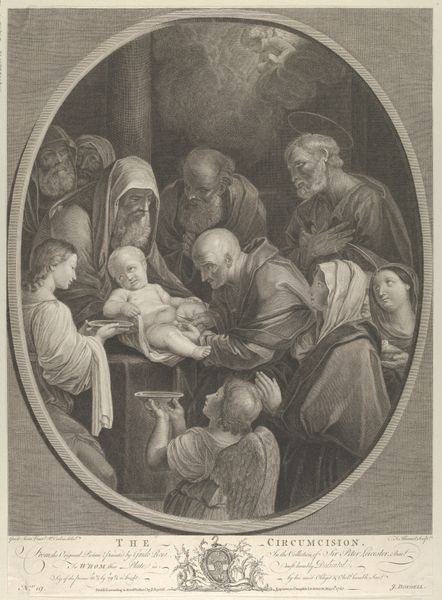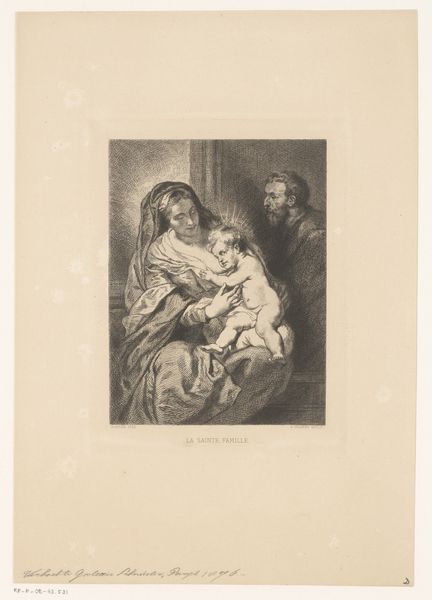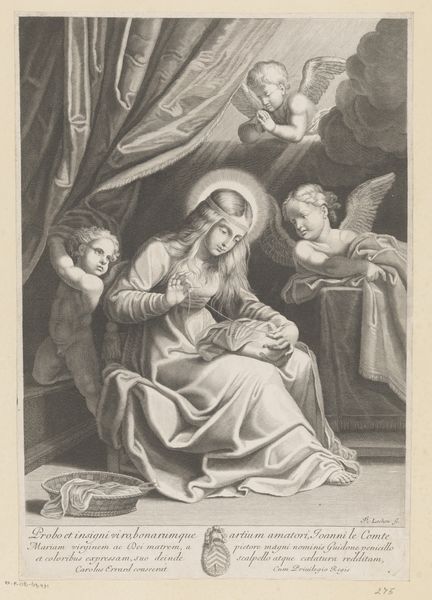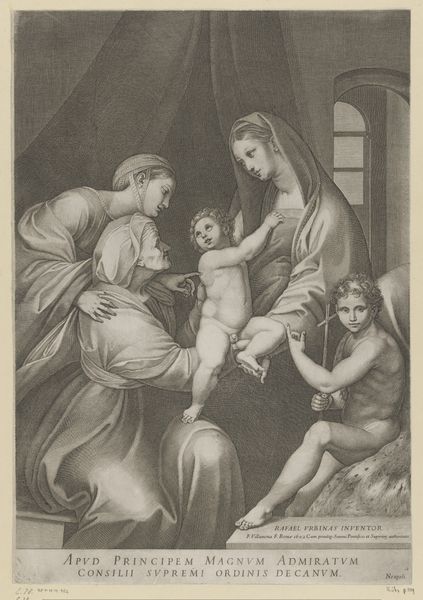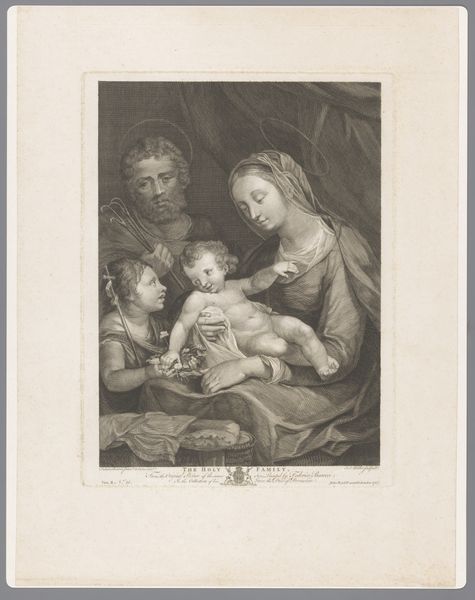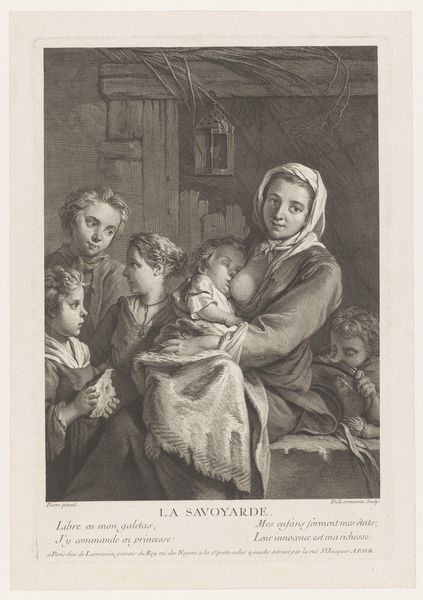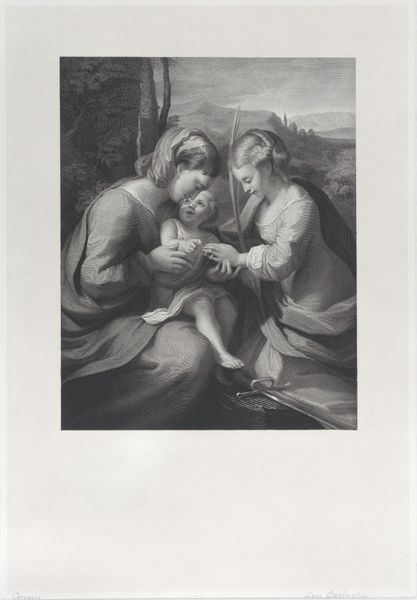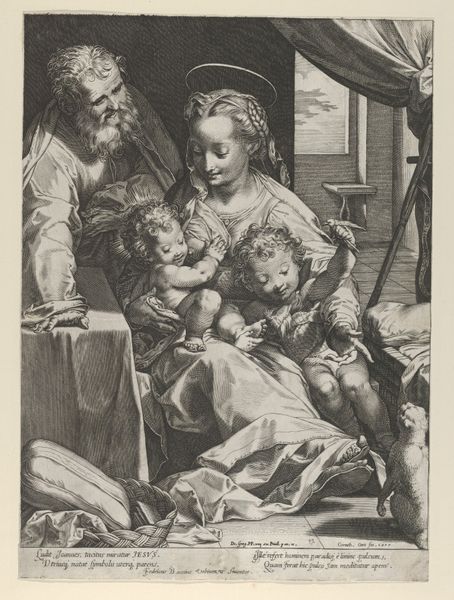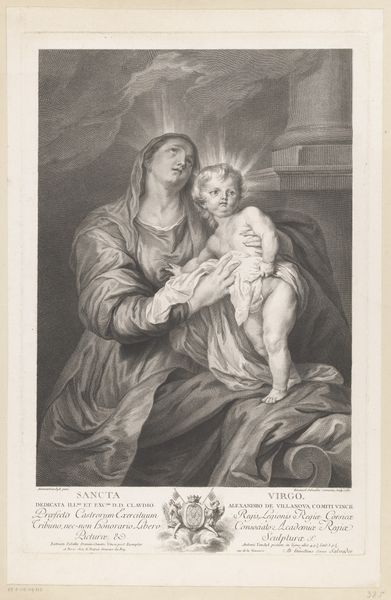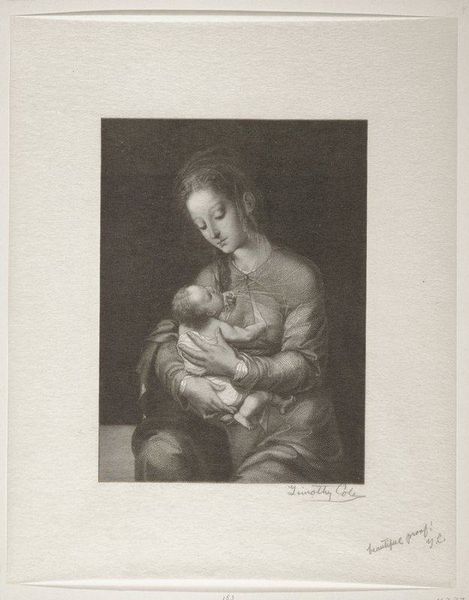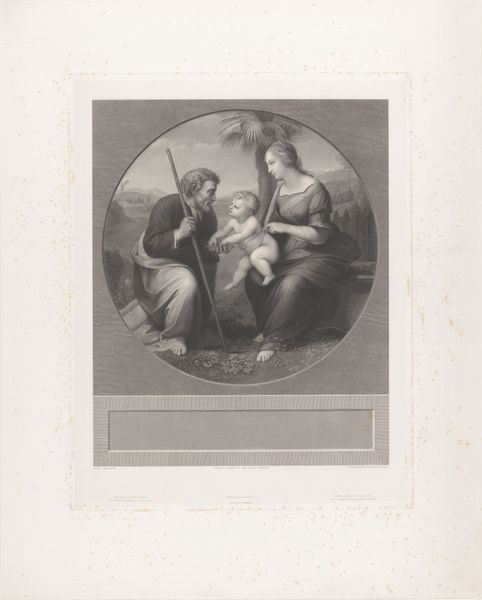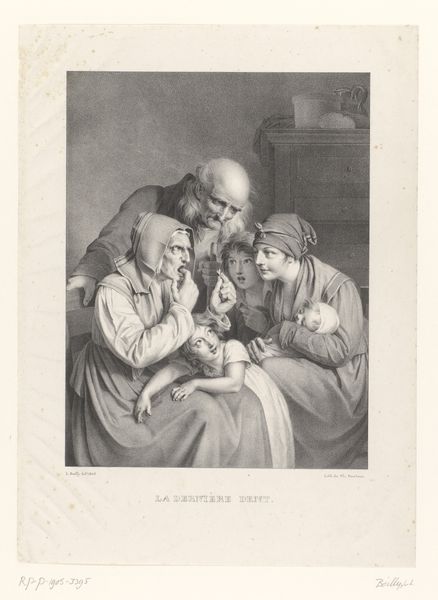
#
neoclacissism
# print
#
intimism
#
genre-painting
Dimensions: height 381 mm, width 283 mm
Copyright: Rijks Museum: Open Domain
Editor: This print by Louis Léopold Boilly, titled "Moeder toont de eerste tand van haar baby" from 1826, captures a really intimate family moment. It's quite touching, but also a little staged-looking, perhaps? What stands out to you in terms of imagery and what feelings does it evoke? Curator: Notice how Boilly arranges the figures almost like a classical tableau, a nod to Neoclassical ideals, even while depicting this everyday domestic scene. Yet, the dog feels far from classical! Consider the symbolism of a first tooth, editor; across cultures, it's a rite of passage, signifying growth, change, and the infant's entry into a new phase of life. It represents potential, not just for the child, but also for the family’s future. Editor: That makes sense. It's interesting to consider the tooth as a symbol of a new beginning within the context of this particular family. Does the presence of everyone -- including the dog -- around the mother and child suggest the community's investment in this child’s future? Curator: Absolutely! You've picked up on a vital point. The gathering serves as a visual testament to shared values, like fertility and generational continuity. Think about how the seemingly insignificant details like the mother’s headdress and the dog at her feet help place the piece in its period and class context. The arrangement almost transforms this domestic space into a sacred space. What do you make of that contrast? Editor: I think by seeing this everyday moment framed with such care, I can appreciate the sacredness of these types of scenes which usually go unnoticed. I hadn't really considered how the symbols in art are influenced by time, place, and shared ideas! Thanks for the illuminating discussion. Curator: It has been my pleasure. By recognizing the visual vocabulary in art, we can unlock cultural values, allowing the images to "speak" beyond time.
Comments
No comments
Be the first to comment and join the conversation on the ultimate creative platform.
